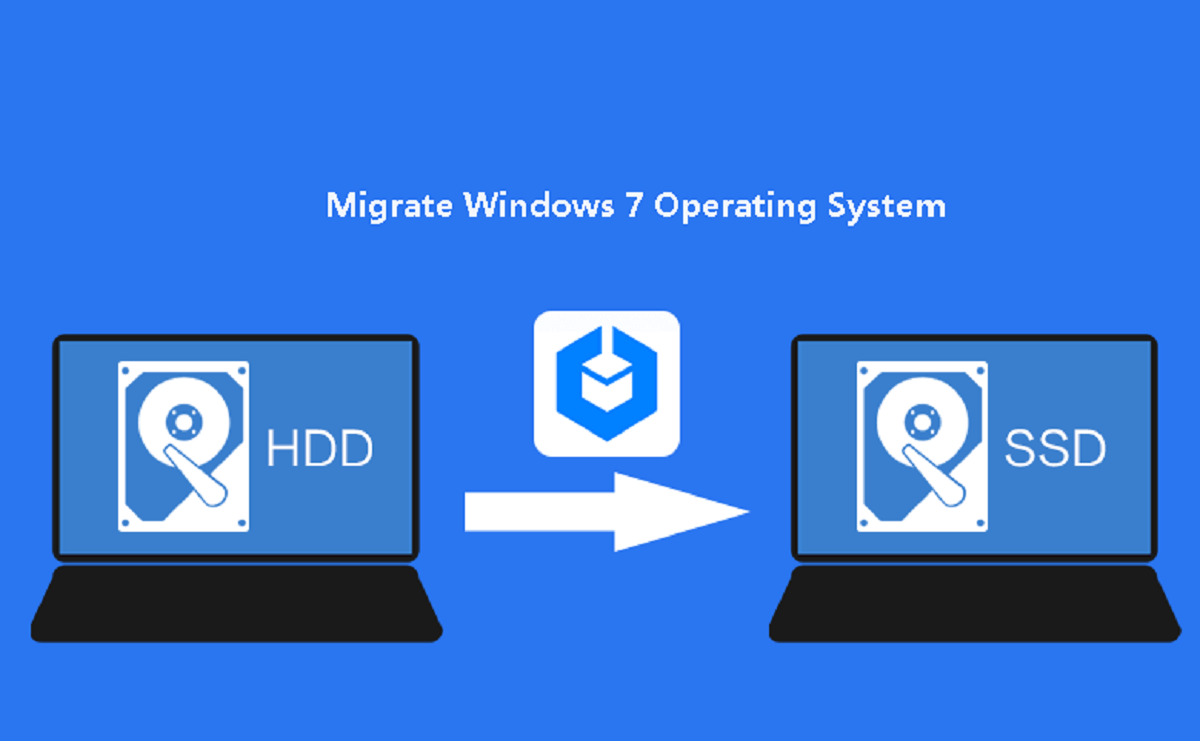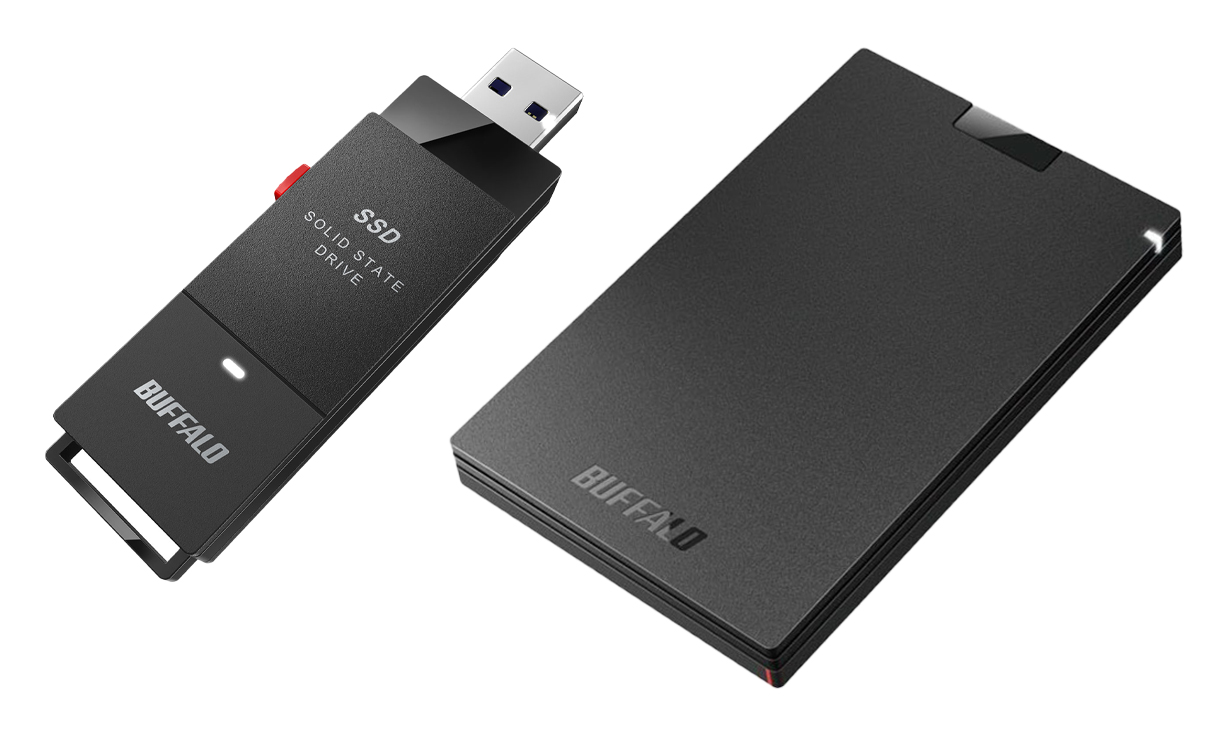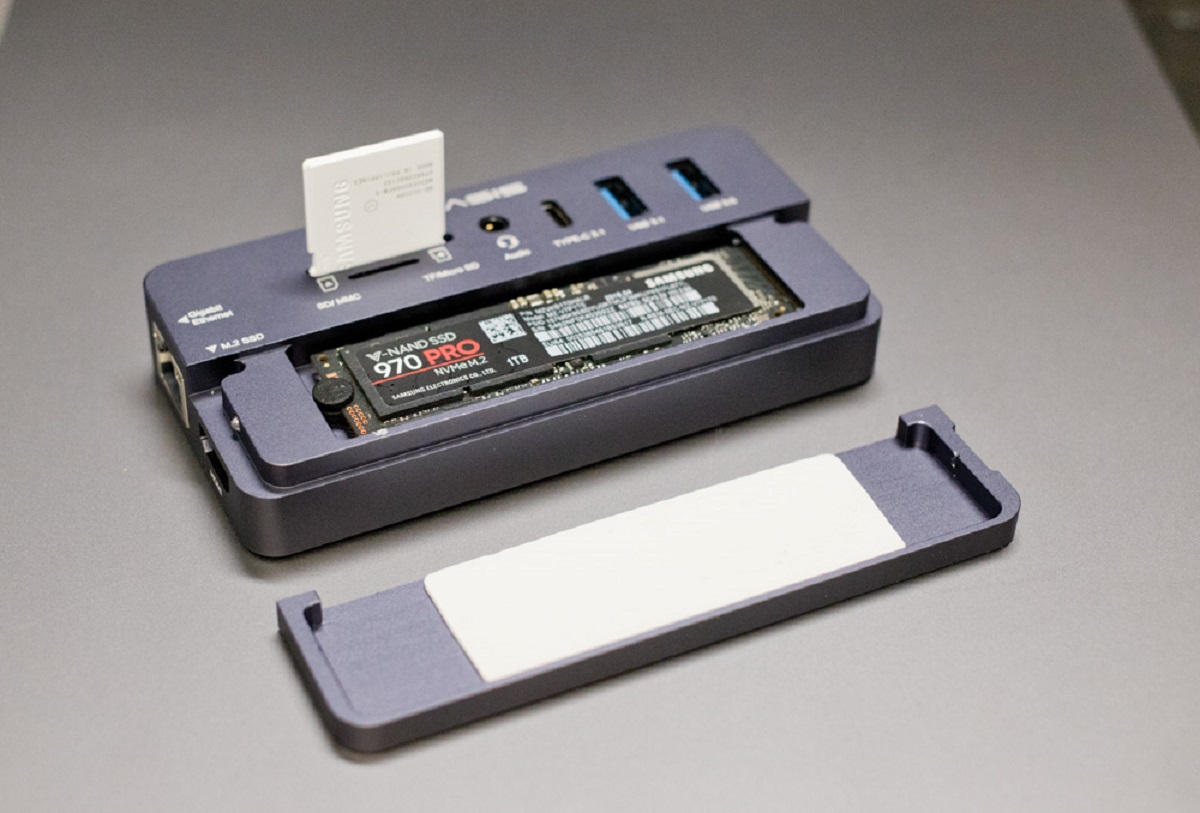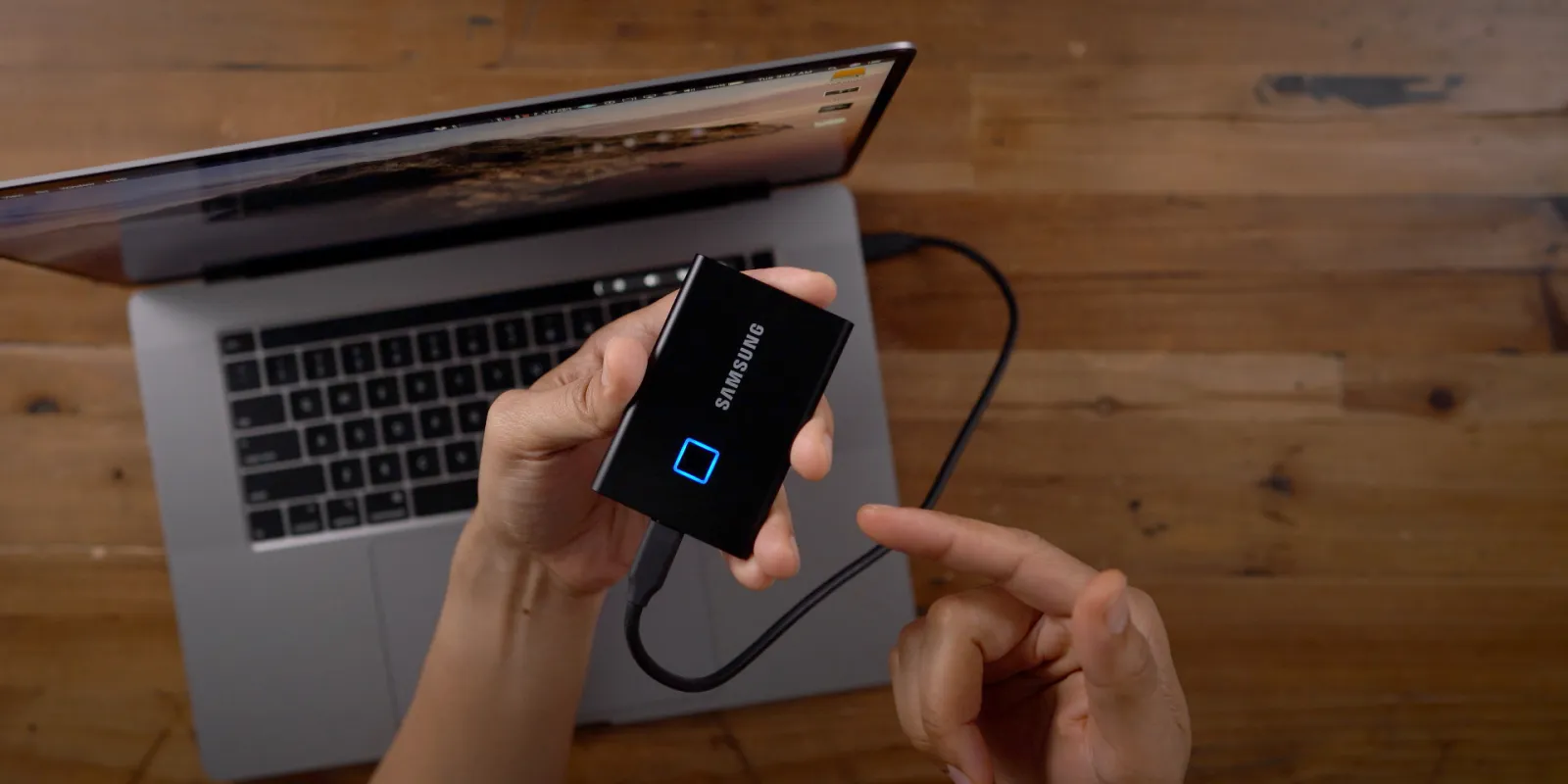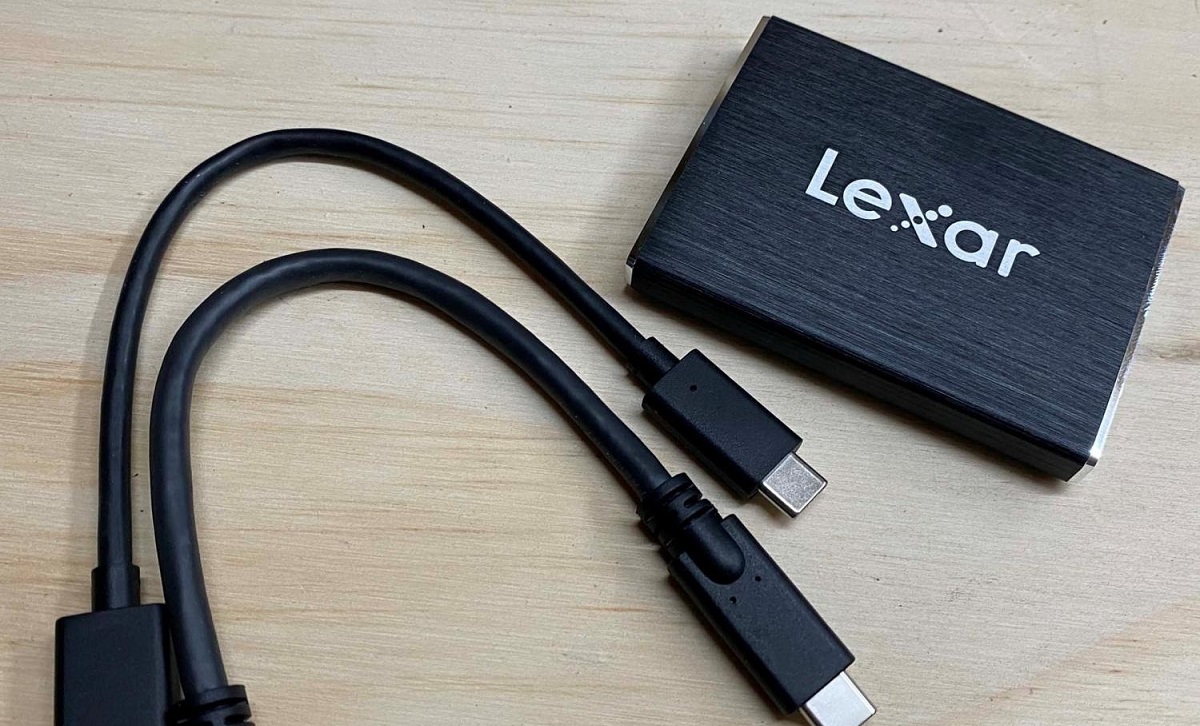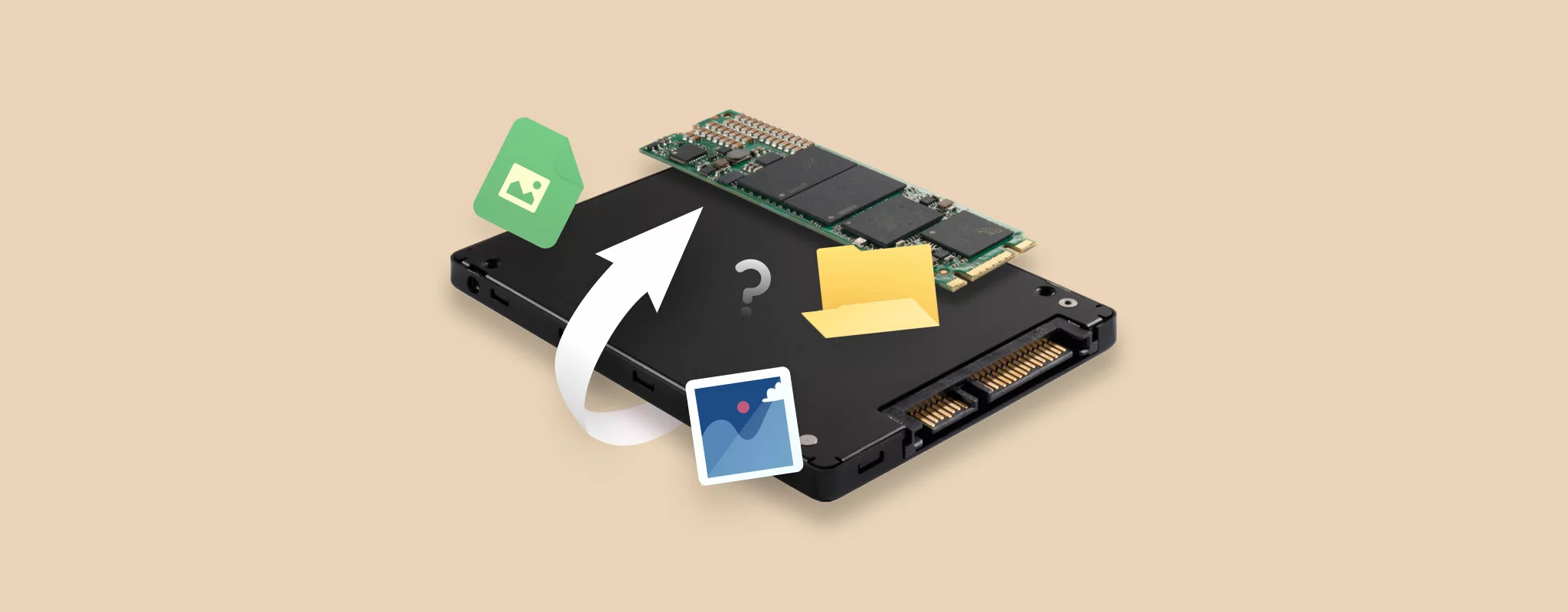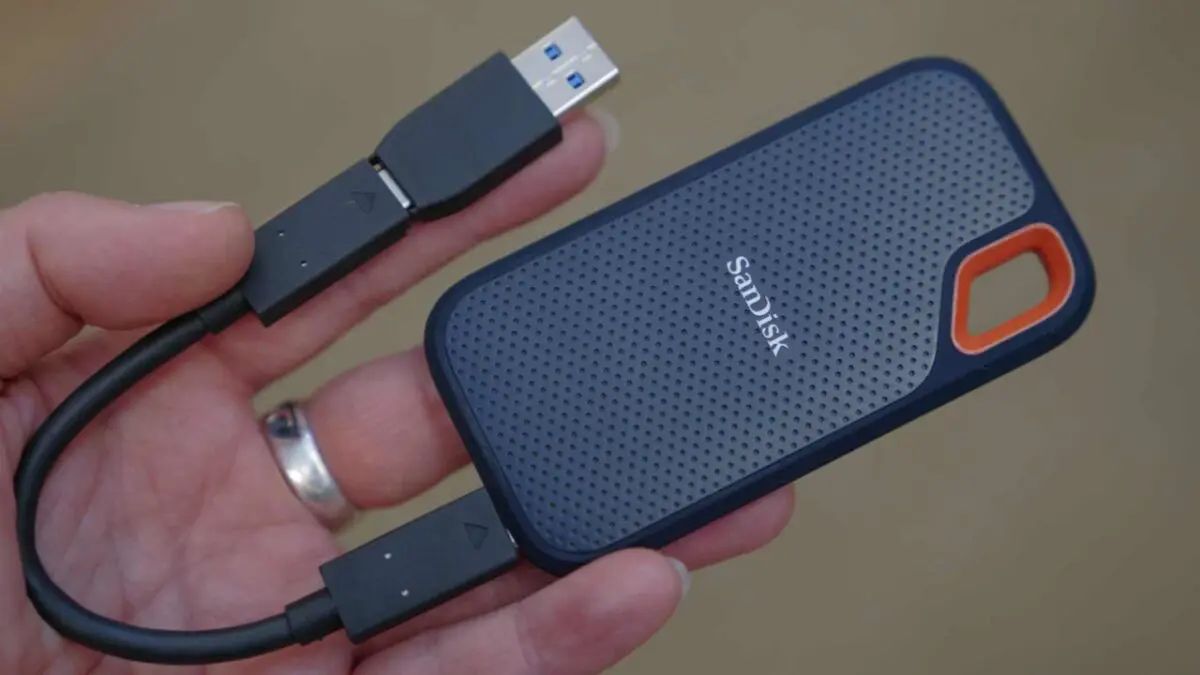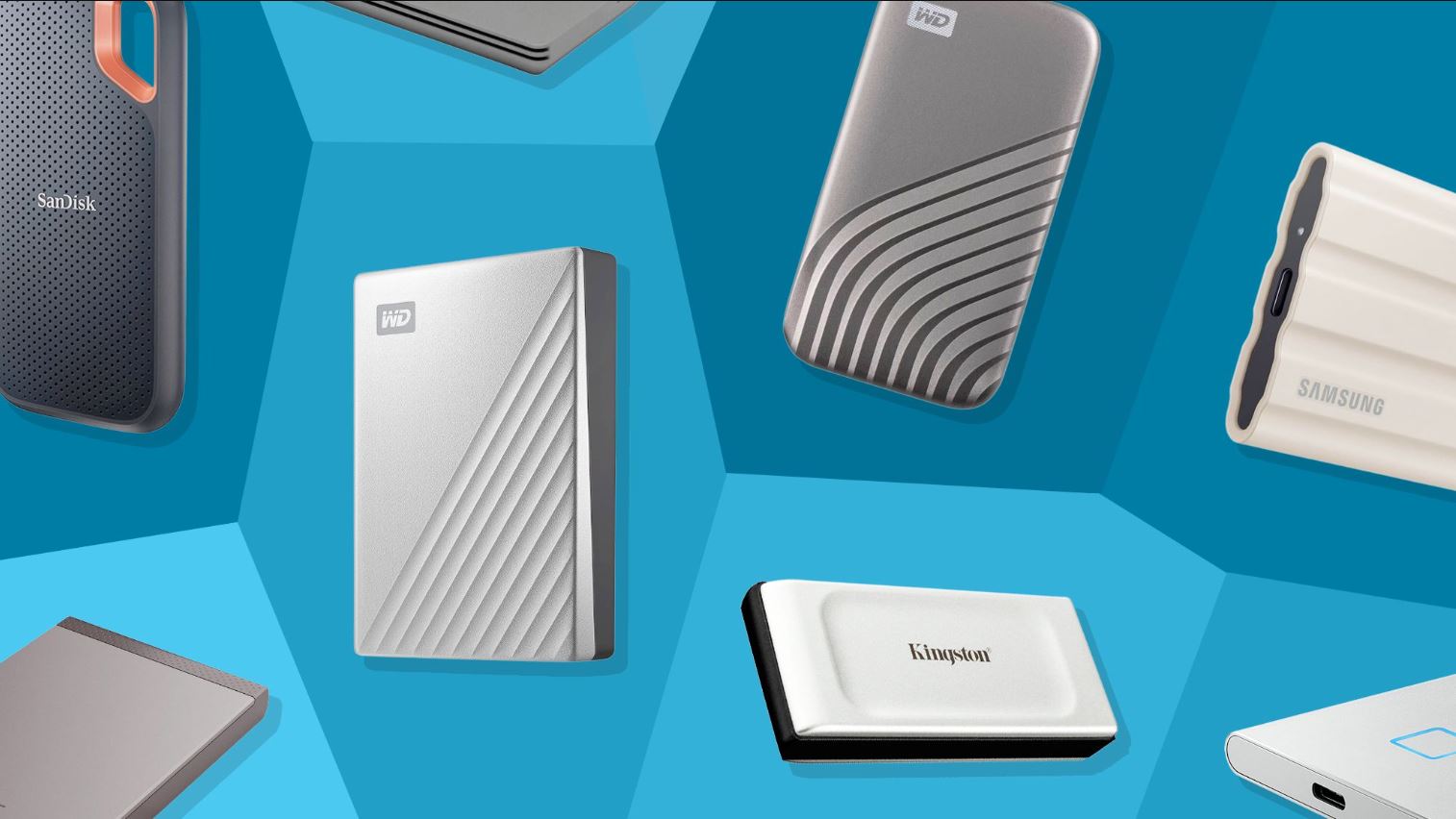Introduction
Welcome to our guide on how to transfer your operating system to an SSD in Windows 7! If you’re looking to boost your computer’s performance and speed up your operating system, upgrading to a solid-state drive (SSD) is a highly recommended option. With faster boot times, quicker application launch, and improved overall responsiveness, an SSD can significantly enhance your computing experience.
Before we dive into the steps involved in transferring your operating system to an SSD, let’s briefly discuss what an SSD actually is. Unlike traditional hard disk drives (HDDs), which use spinning disks to store data, SSDs use flash memory chips. This results in lightning-fast data retrieval and transfer speeds, providing a noticeable performance improvement for your computer.
Now, you might wonder what benefits you can expect from using an SSD. Well, apart from the faster boot and load times, an SSD can also improve your system’s energy efficiency, reduce noise levels, and increase the durability and reliability of your storage solution. These advantages make SSDs a highly sought-after upgrade for those looking to breathe new life into their older systems.
Before you embark on the SSD installation process, there are a few essential preparations you need to make. First and foremost, it’s crucial to back up all your important files and data. While the transfer process generally goes smoothly, there is always a slight risk of data loss, so ensuring you have a backup will give you peace of mind.
Additionally, you need to check if your system is compatible with an SSD. Most modern computers can accommodate an SSD, but it’s crucial to ensure that your system’s connector and interface support the new drive. Consult your computer’s manual or visit the manufacturer’s website for detailed compatibility information.
Next, you’ll need to select the right SSD for your needs. There are various options available in terms of storage capacity and performance, so it’s essential to consider your specific requirements and budget before making a purchase. Additionally, make sure you have the necessary tools and software, such as a screwdriver and cloning software, to assist you during the installation process.
In the next sections, we will guide you through the step-by-step process of cloning your current operating system, creating a bootable USB drive, installing the SSD, and transferring your operating system. We’ll also provide some troubleshooting tips to assist you in case you encounter any issues along the way. So let’s get started and give your Windows 7 system the SSD upgrade it deserves!
What is an SSD?
To understand the benefits of transferring your operating system to an SSD, it’s important to have a clear understanding of what an SSD actually is. SSD stands for Solid-State Drive, which is a type of storage device that has become increasingly popular in recent years.
Unlike traditional hard disk drives (HDDs), which use spinning disks to store data, SSDs use flash memory chips. These memory chips are similar to the ones found in USB drives or memory cards and allow for much faster data retrieval and transfer speeds.
One of the main advantages of SSDs is the absence of moving parts. With an HDD, data is read and written onto spinning disks, which can cause delays and slower speeds. In contrast, SSDs access data electronically, resulting in quicker read and write times. This means that files and applications can be loaded and opened faster, resulting in a noticeable improvement in overall system performance.
In addition to speed, SSDs also offer other significant benefits. For example, due to the lack of moving parts, SSDs are more resistant to physical shocks and damage. This makes them a great option for laptops or portable devices that are prone to being jostled or dropped.
Another advantage of SSDs is their energy efficiency. Because they do not rely on spinning disks, SSDs consume less power, resulting in improved battery life for laptops and reduced electricity usage for desktops. This not only saves you money in the long run but also contributes to a more environmentally friendly computing experience.
SSDs also contribute to a quieter computing experience. Since they lack spinning disks, there is no mechanical noise generated while accessing data. This can make a noticeable difference, especially when working in a quiet environment or when using your computer for multimedia purposes.
Furthermore, SSDs have a longer lifespan compared to HDDs. With no moving parts, there is less wear and tear on the drive, which can prolong its overall life expectancy. This means that you can enjoy the benefits of your SSD for a longer period before needing to replace it.
In summary, an SSD is a type of storage device that offers significant advantages over traditional HDDs. With faster data access, improved durability, energy efficiency, and a longer lifespan, SSDs are an excellent choice for anyone looking to enhance their computer’s performance. Now that we have a clear understanding of SSDs, let’s explore how to transfer your operating system to an SSD in Windows 7.
Benefits of Using an SSD
Upgrading to a solid-state drive (SSD) can bring numerous benefits that greatly enhance your computing experience. In this section, we will explore some of the key advantages of using an SSD in your system.
One of the most noticeable benefits of an SSD is its speed. Traditional hard disk drives (HDDs) rely on spinning disks to access and retrieve data. In contrast, SSDs utilize flash memory chips, which offer lightning-fast read and write speeds. This results in significantly faster boot times and improved application launch times. Whether you’re starting up your computer or opening a resource-intensive program, an SSD can greatly reduce waiting times and provide a smoother overall user experience.
Aside from speed, SSDs also excel in providing faster file transfers. Whether you’re copying large files or transferring data between drives, an SSD can significantly reduce the time it takes to complete these tasks. This makes SSDs particularly beneficial for professionals who regularly work with large amounts of data or need to transfer files quickly.
Another advantage of SSDs is their reliability. Since SSDs do not have any mechanical parts, such as spinning disks, they are less susceptible to shocks and physical damage. This means that accidental drops or bumps are less likely to result in data loss or drive failure. Additionally, SSDs have a longer lifespan compared to HDDs, allowing you to enjoy their benefits for a more extended period before needing a replacement.
SSDs also consume less power compared to HDDs. This energy efficiency not only helps to reduce electricity usage but also extends battery life in laptops. If you’re frequently working on the go or rely heavily on battery power, an SSD can significantly improve your device’s longevity before requiring a recharge.
Furthermore, SSDs operate silently. Since there are no moving parts involved, SSDs generate virtually no noise during data access and transfers. This makes them ideal for environments where noise levels need to be kept to a minimum, such as recording studios or libraries.
Lastly, SSDs offer a compact form factor, making them ideal for small form factor systems or devices with limited space. With their slim profile, SSDs can fit into laptops, ultrabooks, or mini PCs without taking up much room. This enables you to enjoy the benefits of an SSD even in portable or space-constrained workstations.
In summary, using an SSD brings numerous benefits to your computing experience, including faster speeds, improved reliability, energy efficiency, silent operation, and compatibility with small form factor systems. With these advantages, an SSD upgrade can significantly enhance your system’s performance and productivity.
Preparing for the Transfer
Before you begin the process of transferring your operating system to an SSD, it’s essential to make a few preparations. Taking these steps beforehand will help ensure a smooth and successful transfer without any data loss or complications.
The first and most crucial step is to back up all your important files and data. While the transfer process is generally safe, there is always a slight risk of data loss. By creating a backup, you can have peace of mind knowing that your valuable files are safely stored elsewhere. You can use an external hard drive, cloud storage services, or even a USB drive to save your data. Take the time to carefully review your files and make sure you have everything backed up before proceeding.
Next, you need to check if your system is compatible with an SSD. Most modern computers can accommodate an SSD, but it’s essential to ensure that your system’s connector and interface support the new drive. The most common interface for SSDs is SATA (Serial ATA). Check your computer’s manual or visit the manufacturer’s website to determine if your system is compatible with an SSD and what type of SSD it supports. Note that some older systems may require additional adaptors or connectors to connect the SSD properly.
Choosing the right SSD for your needs is also important. SSDs come in various storage capacities, ranging from a few hundred gigabytes to multiple terabytes. Consider your storage requirements and budget when selecting an SSD. Keep in mind that transferring your operating system to an SSD will require enough storage space to accommodate the operating system, applications, and files. It’s always a good idea to leave some buffer space to ensure optimal performance.
Once you have your SSD, you’ll need to gather the necessary tools and software for the transfer process. Most SSDs come with a kit that includes a screwdriver and any required mounting brackets. If not, you will need a small screwdriver compatible with the screws used in your computer’s casing. Additionally, you will need cloning software to transfer your current operating system to the new SSD. There are several cloning software options available, such as Acronis True Image, EaseUS Todo Backup, or Macrium Reflect. Research and choose the software that best suits your needs and ensure you have it ready before proceeding.
In the next section, we will guide you through the step-by-step process of cloning your current operating system and transferring it to the SSD. Following these steps and being prepared will help ensure a successful transfer with minimal hassle. So let’s move forward and make the most of your new SSD upgrade.
Backup Important Files and Data
One of the most critical steps in preparing for the transfer of your operating system to an SSD is to back up all your important files and data. While the transfer process is generally safe, it’s always better to be safe than sorry when it comes to preserving your valuable data.
Before you begin the backup process, take the time to identify the files and data that are essential to you. These may include documents, photos, videos, music, emails, bookmarks, and any other files that you cannot afford to lose. Create a list of these items to ensure that you don’t miss anything during the backup.
There are several options available for creating backups. One of the most common and convenient methods is to use an external hard drive. Simply connect the external hard drive to your computer and copy and paste the desired files into the drive. Make sure to organize the files in a way that makes it easy for you to identify and access them later.
Another option for backing up your files is to use cloud storage services. Providers like Google Drive, Dropbox, and OneDrive offer free or paid storage options where you can upload and store your files securely online. This is a convenient method as it allows you to access your files from any device with an internet connection.
If you have a large amount of data to back up, you may consider using a combination of both external hard drives and cloud storage services to ensure redundancy and extra protection. This way, even if one backup method fails, you still have another copy of your important files.
After completing the backup, it’s essential to verify that the backup files are readable and intact. Take the time to open a few random files and check if they are accessible and not corrupted. This step will give you peace of mind knowing that your backup is reliable and can be used in the event of any unforeseen issues during the transfer process.
Remember that it’s not just files that need to be backed up. Take note of any software or applications that might not be easily reinstalled. Some software may require product keys or license codes for reinstallation, so make sure you have those as well. It’s better to be thorough and double-check to ensure you have all the necessary files and information backed up before proceeding.
In summary, backing up your important files and data is a crucial step in preparing for the transfer of your operating system to an SSD. It provides an extra layer of protection and offers peace of mind, knowing that your valuable data is safe and can be easily restored if needed. Take the time to identify and back up all your essential files, use external hard drives or cloud storage services, and verify the integrity of your backup. By doing so, you’ll be ready to proceed with the transfer process confidently.
Check if Your System is Compatible with an SSD
Before proceeding with the transfer of your operating system to an SSD, it’s crucial to verify if your system is compatible with this type of storage device. While most modern computers can accommodate an SSD, it’s essential to confirm that your system’s connector and interface support the new drive.
The most common interface for SSDs is SATA (Serial ATA). SATA is a widely used interface that allows for high-speed data transfer between the SSD and the motherboard of your computer. It’s important to ensure that your computer has SATA ports available to connect the SSD. Most SATA interfaces come in two varieties: SATA II (3Gbps) and SATA III (6Gbps). The latter is faster and more efficient, so if your computer supports SATA III, it’s recommended to use it for optimal performance.
To check the compatibility of your system, consult your computer’s manual or visit the manufacturer’s website for detailed information about the supported storage devices and interfaces. Look for specifications such as SATA compatibility or storage drive compatibility. If you can’t find the necessary information, contacting the manufacturer’s technical support can provide the clarification you need.
In addition to the SATA interface, you should also consider the physical form factor of the SSD. Traditional 2.5-inch SSDs are the most common and versatile, as they can fit into the majority of laptop and desktop computers. However, some systems may require a different form factor, such as mSATA or M.2 SSDs. These are smaller and designed for specific types of devices. Make sure to identify the type of form factor that your computer supports and purchase an SSD accordingly to ensure proper installation.
It’s also worth noting that some older systems may require additional adaptors or connectors to connect the SSD properly. If your computer is incompatible with the SSD’s connector, you may need to purchase an appropriate adaptor or seek professional assistance to install the SSD correctly.
Checking the compatibility of your system with an SSD is an essential step to ensure a successful transfer of your operating system. It allows you to determine if your computer supports the necessary interfaces and form factors required for SSD installation. By confirming compatibility, you can proceed with confidence, knowing that your system is fully compatible with the SSD and that you won’t encounter any unexpected issues during the installation process.
Selecting the Right SSD for Your Needs
Choosing the right solid-state drive (SSD) is crucial to ensure optimal performance and compatibility with your system. With a wide range of options available in terms of storage capacity, speed, and price, it’s important to consider your specific needs and budget when selecting an SSD.
The first factor to consider is the storage capacity you require. SSDs come in a variety of sizes, ranging from a few hundred gigabytes (GB) to several terabytes (TB). Take into account the space needed for your operating system, applications, and other files you regularly use. If you have large media files or work with a lot of data-intensive software, you may want to opt for a larger capacity SSD to ensure you have enough space for future needs.
Another important consideration is the performance of the SSD. Look for the SSD’s read and write speeds, which indicate how quickly data can be accessed and transferred. Higher speeds generally result in faster system boot times, quicker application loading, and smoother overall performance. SSDs with SATA III (6Gbps) interfaces tend to offer faster speeds compared to SATA II (3Gbps) counterparts. However, if your system only supports SATA II, opting for a SATA III SSD can still provide a performance boost for future upgrades.
You should also consider the endurance and reliability of the SSD. Check the drive’s endurance rating, often measured in Total Bytes Written (TBW), which indicates how much data the drive can write over its lifespan. Higher TBW ratings imply better durability and a longer lifespan for the SSD. Additionally, look for SSDs with technologies that enhance reliability, such as error correction codes and power loss protection, which help protect your data and prevent data loss in case of power outages or other unexpected events.
Price is another important factor to take into account. SSDs tend to be more expensive than traditional hard disk drives (HDDs), but the prices have been steadily decreasing over the years. Set a budget for your SSD and consider the trade-off between capacity, performance, and budget constraints. Remember that while a higher capacity SSD with faster speeds may be appealing, it may not always be necessary depending on your specific usage requirements.
Lastly, check reviews and ratings from reputable sources to get a sense of the reliability and customer satisfaction with the SSD you’re considering. Look for SSDs from well-known manufacturers with a good track record for quality and performance to ensure you’re making a wise investment.
In summary, selecting the right SSD involves considering factors such as storage capacity, performance, endurance, reliability, price, and customer reviews. By assessing your needs and budget, you can choose an SSD that offers the best balance of capacity, speed, and reliability for your specific requirements. Taking the time to research and choose wisely will ensure that you get the most out of your SSD upgrade and enjoy improved system performance and responsiveness.
Required Tools and Software
Before you can begin the process of transferring your operating system to an SSD, it’s important to gather the necessary tools and software to ensure a smooth and successful installation. Here are some of the essential items you’ll need for the task.
1. Screwdriver: Most SSDs come with a package that includes a screwdriver. However, if yours doesn’t, you’ll need a small screwdriver to open your computer’s casing and secure the SSD in place. Make sure the screwdriver is compatible with the screws used in your computer’s chassis.
2. Cloning Software: Cloning software is essential for transferring your operating system and data from your current drive to the new SSD. It creates an exact replica of your existing drive, allowing you to migrate your entire operating system, applications, and files seamlessly. Popular cloning software options include Acronis True Image, EaseUS Todo Backup, and Macrium Reflect. Research and choose the software that best fits your needs and make sure to have it downloaded and installed on your computer before starting the transfer process.
3. USB Drive: You’ll need a USB drive to create a bootable disk or drive for cloning. This will allow you to boot your computer from the USB drive and access the cloning software. Ensure that the USB drive has enough capacity to hold the cloning software and any necessary files.
4. SATA to USB Adapter (optional): If you don’t have an available SATA port on your computer for connecting the SSD, a SATA to USB adapter can be helpful. This adapter allows you to connect the SSD via USB, making the transfer process easier. However, not all SSDs come with the necessary cables, so check the contents of your SSD package to see if an adapter is included.
5. User Manual: Familiarize yourself with the user manual or instructions provided by the SSD manufacturer. It may contain specific guidelines or recommendations for installation and setup. Refer to the manual if you encounter any difficulties during the process.
Having these tools and software gathered and ready before you begin the transfer process will help ensure a smoother and more efficient installation. It’s essential to take your time, follow the instructions carefully, and refer to any documentation or online resources provided by the SSD manufacturer to ensure a successful transfer of your operating system to the new SSD.
Cloning Your Current Operating System
Once you have all the necessary tools and software gathered, it’s time to clone your current operating system to the new SSD. Cloning allows you to create an exact replica of your existing drive, including the operating system, applications, and files, which can then be transferred to the SSD. Here’s a step-by-step guide on how to clone your operating system:
1. Connect the SSD: Open your computer’s casing and locate an available SATA port to connect the SSD. Use a screwdriver to secure the SSD in place if necessary. If you don’t have an available SATA port, you can use a SATA to USB adapter to connect the SSD via USB.
2. Backup Important Data: Before starting the cloning process, it’s crucial to back up all your important files and data. This ensures that even if something goes wrong during the transfer, your data remains safe.
3. Boot from the Cloning Software: Insert the USB drive with the cloning software into a USB port on your computer. Restart your computer and enter the BIOS settings by pressing the designated key (usually F2, F10, or Delete) during startup. In the BIOS settings, change the boot order to boot from the USB drive first.
4. Launch the Cloning Software: Once your computer boots from the USB drive, the cloning software should load. Follow the prompts to launch the cloning software and select the option to clone your current drive to the SSD.
5. Configure the Cloning Settings: In the cloning software, you may have the option to select specific partitions or drives to clone. Ensure that you select the correct source drive (your current drive) and the correct destination drive (the SSD).
6. Start the Cloning Process: Once you’ve configured the settings, start the cloning process. Depending on the size of your current drive and the speed of your hardware, the cloning process may take some time to complete. Be patient and let the software do its work.
7. Verify the Cloning Success: Once the cloning process is finished, the software should notify you of its completion. Before proceeding, it’s crucial to verify the success of the cloning process. Check that all your files and data are present on the SSD and that there are no errors or issues. This step ensures that the transfer was successful and that you can now boot from the SSD without any problems.
8. Set the SSD as the Boot Drive: To complete the transfer, you need to set the SSD as the boot drive in your computer’s BIOS settings. Restart your computer and enter the BIOS settings again. Change the boot order to prioritize the SSD as the first boot option. Save the changes and exit the BIOS.
Congratulations! You have successfully cloned your operating system to the new SSD. Your computer should now boot from the SSD, providing you with faster startup times and improved overall performance. Enjoy the benefits of your new SSD and the enhanced computing experience it brings.
Creating a Bootable USB Drive
One of the essential steps in transferring your operating system to an SSD is creating a bootable USB drive. This will allow you to boot your computer from the USB drive and access the cloning software needed for the transfer process. Here’s a step-by-step guide on how to create a bootable USB drive:
1. Obtain the Cloning Software: Download the cloning software of your choice from the manufacturer’s website onto your computer. Ensure that you download the appropriate version compatible with your operating system.
2. Get a USB Drive: Prepare a USB drive with sufficient storage capacity to hold the cloning software and any necessary files. Make sure the USB drive is formatted and empty to avoid conflicts during the creation process.
3. Format the USB Drive: Open the File Explorer on your computer, right-click on the USB drive, and select the “Format” option. Choose the file system format as FAT32 or NTFS, and leave the allocation unit size as the default.
4. Create a Bootable USB Drive: To create a bootable USB drive, you will need a tool such as Rufus or Windows USB/DVD Download Tool. Download and install the preferred tool on your computer.
5. Launch the Bootable USB Creation Tool: Open the bootable USB creation tool and select the option to create a bootable USB drive. Follow the prompts and browse for the cloning software ISO file that you downloaded earlier.
6. Choose the USB Drive as the Destination: In the bootable USB creation tool, select the USB drive you prepared as the destination for the clone software ISO file. Double-check that you have selected the correct drive to avoid accidentally overwriting any important data.
7. Start the Creation Process: Once all the settings are configured, start the creation process by clicking the “Start” or “Create” button in the bootable USB creation tool. The tool will begin copying the necessary files onto the USB drive and create a bootable version of the cloning software.
8. Verify the Bootable USB Drive: Once the creation process is complete, verify that the USB drive is indeed bootable. Restart your computer and enter the BIOS settings by pressing the designated key during startup. In the BIOS settings, change the boot order to prioritize the USB drive. Save the changes and exit the BIOS. If your computer boots from the USB drive successfully, it means that the bootable USB creation was successful.
Now that you have a bootable USB drive, you can boot your computer from it and proceed with the cloning process. The bootable USB drive will allow you to access the cloning software and transfer your operating system to the new SSD. Follow the instructions provided in the “Cloning your current operating system” section to complete the transfer successfully.
Installing the SSD
After preparing the necessary tools and creating a bootable USB drive, it’s time to install the SSD into your computer. Proper installation ensures that the SSD is securely connected and ready for the transfer of your operating system. Follow these steps to install the SSD successfully:
1. Power Down Your Computer: Shut down your computer completely and disconnect the power cable from the wall outlet. This is to ensure that there is no power running through the system during the installation process.
2. Open Your Computer’s Casing: Use a screwdriver to remove the screws or clips that secure the computer’s casing. Slide off the side panel or remove the cover, exposing the internal components. Place the screws in a safe place to avoid loss.
3. Locate an Available Drive Bay: Look for an available drive bay in your computer’s casing where you can install the SSD. The bay should be suitable for your SSD’s physical form factor, such as a 2.5-inch drive bay for a traditional SSD or an M.2 slot for an M.2 SSD.
4. Connect the SSD: If using a traditional 2.5-inch SSD, connect the SATA data cable to one of the available SATA connectors on your motherboard. Next, connect the other end of the data cable to the SATA port on the SSD. Align the SATA power connector with the corresponding power port on the SSD and connect it securely.
5. Install the SSD in the Drive Bay: Place the SSD into the drive bay carefully, ensuring that it is aligned with the screw holes or mounting brackets. Use the screws or clips that were removed earlier to secure the SSD firmly in place. Make sure the SSD is securely attached to avoid any movement or disconnection.
6. Close the Computer’s Casing: Once the SSD is securely installed, replace the computer’s casing by sliding the side panel back into position or reattaching the cover. Use the screws or clips to secure the casing, ensuring that everything is aligned correctly.
7. Reconnect Cables and Power On: Reconnect any cables that were detached, including the power cable, video cable, and peripherals. Double-check all connections to ensure they are secure. Plug in the power cable and turn on your computer.
Now that the SSD is installed, it’s time to proceed with transferring your operating system to the new SSD. Follow the instructions provided in the “Cloning your current operating system” section to complete the transfer successfully. Once the transfer is complete, your computer will be ready to harness the improved performance and speed offered by the SSD. Enjoy the benefits of your new SSD and the enhanced computing experience it brings.
Transferring the Operating System
With the SSD installed in your computer and the necessary tools and software ready, it’s time to transfer your operating system to the new SSD. This process will clone your current operating system, applications, and files onto the SSD, allowing you to enjoy the improved speed and performance. Follow these steps to transfer your operating system successfully:
1. Boot from the Bootable USB Drive: Insert the bootable USB drive into a USB port on your computer. Restart your computer and enter the BIOS settings by pressing the designated key during startup. In the BIOS settings, change the boot order to prioritize the bootable USB drive. Save the changes and exit the BIOS. Your computer will now boot from the USB drive.
2. Launch the Cloning Software: Once your computer has booted from the USB drive, the cloning software should automatically launch. Follow the prompts and instructions provided by the software to begin the cloning process.
3. Select Source and Destination Drives: In the cloning software, select your current drive (the source drive) and the new SSD (the destination drive). Make sure you are selecting the correct drives to avoid data loss. Double-check the selections before proceeding.
4. Configure Cloning Options: Depending on the software you are using, you may have various options to configure during the cloning process. These options can include choosing to clone the entire drive or specific partitions, resizing partitions, or adjusting settings related to the new SSD. Follow the software’s instructions and select the appropriate options for your needs.
5. Start the Cloning Process: Once you have configured the cloning options, start the cloning process. The software will begin cloning your operating system, applications, and files from the source drive to the destination SSD. The time for completion will depend on the size of your data and the speed of your hardware.
6. Verify the Cloning Success: After the cloning process is complete, the software will notify you of its completion. Before proceeding, it’s crucial to verify the success of the cloning process. Ensure that all your files, applications, and operating system settings have been transferred to the SSD. Check that the SSD is recognized as the new boot drive in the BIOS settings.
7. Set the SSD as the Boot Drive: To boot from the SSD, restart your computer and enter the BIOS settings again. Change the boot order to prioritize the SSD as the first boot option. Save the changes and exit the BIOS. Your computer will now boot from the new SSD.
Congratulations! You have successfully transferred your operating system to the new SSD. Enjoy the improved speed and performance that the SSD brings to your computer. Take a moment to ensure that all your applications and files are accessible and that the system is running smoothly. If everything looks good, you can format the old drive or repurpose it as an additional storage drive. Your computer is now ready to deliver a faster and more efficient computing experience.
Verifying the Successful Transfer
After transferring your operating system to the new SSD, it’s important to verify that the process was successful. Ensuring a successful transfer will give you confidence that your computer is now running on the SSD and that all your data and applications are intact. Here are some steps to verify the successful transfer:
1. Check Boot Time: Restart your computer and note the boot time. With the operating system now on the SSD, you should notice a significant decrease in boot time compared to when it was on the previous drive. If the boot time is noticeably faster, it indicates a successful transfer.
2. Test Application Launch: Open some of your commonly used applications. Pay attention to how quickly they load and become responsive. If you notice a significant improvement in the launch time and overall performance of the applications, it indicates a successful transfer.
3. Access Files and Folders: Navigate through your files and folders to ensure all your data is accessible. Open various files, such as documents, images, and videos, to confirm that they open without any issues. If you can access your files and they work as expected, it indicates a successful transfer.
4. Verify System Settings: Check your system settings to ensure they are configured correctly. Verify that your operating system version, device drivers, and other settings match what you had before the transfer. If everything appears as it should, it indicates a successful transfer.
5. Run a System Performance Test: Use benchmarking tools or performance testing software to assess the performance of your system. Compare the results to the performance of your system before the transfer. If the tests show improved performance, it indicates a successful transfer.
6. Monitor System Stability: Keep an eye on your computer’s stability and performance over time. Run your regular day-to-day tasks and monitor for any crashes, errors, or unusual behavior. If your system remains stable and performs well, it indicates a successful transfer.
By following these verification steps, you can ensure that the transfer of your operating system to the SSD was successful. If you encounter any issues or discrepancies, refer to the troubleshooting tips provided in the next section for possible solutions. With a successfully transferred operating system, you can now enjoy the improved speed, performance, and responsiveness that the SSD brings to your computer.
Troubleshooting Common Issues
While transferring your operating system to an SSD is usually a smooth process, there may be some common issues that can arise. Here are some troubleshooting tips to help you address and resolve these issues:
1. SSD Not Recognized: If your computer does not recognize the SSD after the transfer, ensure that it is properly connected. Check the SATA data and power cables and make sure they are securely attached. Verify in the BIOS settings that the SSD is enabled and appears in the list of recognized drives.
2. Booting from Old Drive Instead of SSD: In some cases, your computer might still be booting from the old drive instead of the newly installed SSD. In the BIOS settings, check the boot order and ensure that the SSD is set as the first boot option.
3. Slow Performance or Errors: If you notice slower performance or encounter errors after the transfer, ensure that you have installed the necessary drivers for the SSD. Visit the manufacturer’s website and download the latest drivers and firmware updates for your SSD model. Updating these drivers can help improve performance and fix any compatibility issues.
4. Insufficient Storage Space: If you opted for a smaller SSD capacity, you might run into storage space issues. Regularly monitor your available storage space and consider deleting unnecessary files or moving large files to an external storage device. Alternatively, you can upgrade to a larger capacity SSD if additional storage is required.
5. Incompatibility with Cloning Software: If the cloning software you initially used encountered issues during the transfer, consider switching to a different cloning software. Ensure that you are using the latest version of the software and that it is compatible with your specific operating system and SSD model.
6. Data Corruption or Loss: If you encounter data corruption or loss after the transfer, ensure that you have a recent backup of your important files and data. Consult professional data recovery services if necessary.
7. System Stability Issues: If you experience system crashes, freezes, or instability after the transfer, it may indicate a compatibility issue or a problem with the SSD. Ensure that your system’s drivers are up to date and that the SSD firmware is the latest version available. Consider contacting the SSD manufacturer for further assistance or troubleshooting steps.
If you encounter any of these issues or other unexpected problems, don’t panic. The key is to remain calm and methodically troubleshoot the issue. Check the connections, update drivers and firmware, and consult manufacturer documentation or support resources for additional guidance. In some cases, seeking professional assistance from a computer technician or the SSD manufacturer may be necessary to resolve more complex issues.
By following these troubleshooting tips, you can identify and resolve common issues that may arise during or after the transfer process. With patience and diligence, you’ll be able to address any challenges and create a seamless computing experience with your new SSD.
Conclusion
Congratulations! You have successfully learned how to transfer your operating system to an SSD in Windows 7. By following the steps outlined in this guide, you have enhanced the performance and speed of your computer, allowing for faster boot times, quicker application launch, and improved overall responsiveness.
Throughout this process, you learned what an SSD is and the benefits it offers over traditional hard disk drives (HDDs). You also made necessary preparations, such as backing up important files and data, checking system compatibility, selecting the right SSD, and gathering the required tools and software.
You then successfully cloned your operating system using the provided cloning software and transferred it to the new SSD. Verifying the successful transfer ensured that your system is now running on the SSD and that all your data and applications are intact.
In the event of encountering any issues, the troubleshooting tips provided in this guide serve as a valuable resource to help you address and resolve common problems.
Now that you have completed the transfer, your computer is ready to deliver an enhanced computing experience. You can enjoy faster boot times, quicker application launches, and improved overall system performance. Make sure to regularly monitor the performance and keep your SSD firmware and drivers up to date to maintain optimal functionality.
Remember, an SSD upgrade is an investment in your computer’s performance and longevity. With proper care and maintenance, it will continue to provide you with improved speed and responsiveness for years to come.
Thank you for following this guide, and we hope you enjoy the benefits of your newly upgraded system with the SSD. Happy computing!







